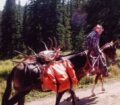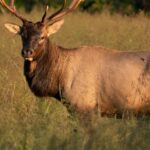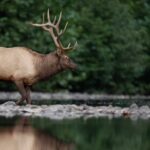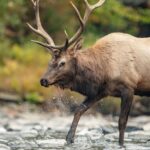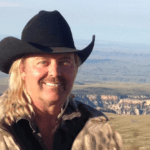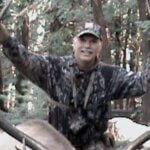Editor’s Note: We’re learning more about hunting elk this week. Today, 77-year-old David Hale of Cadiz, Kentucky, one of the founders of Knight and Hale Game Calls, who’s been hunting elk for 35 years, shares some of his experiences hunting elk. David, with his partner, Harold Knight, started Knight & Hale Game Calls, and David has taken 34 bull elk and called in another 20 elk for friends, family members, customers, and outdoor writers. David is well-known for his hunting prowess.
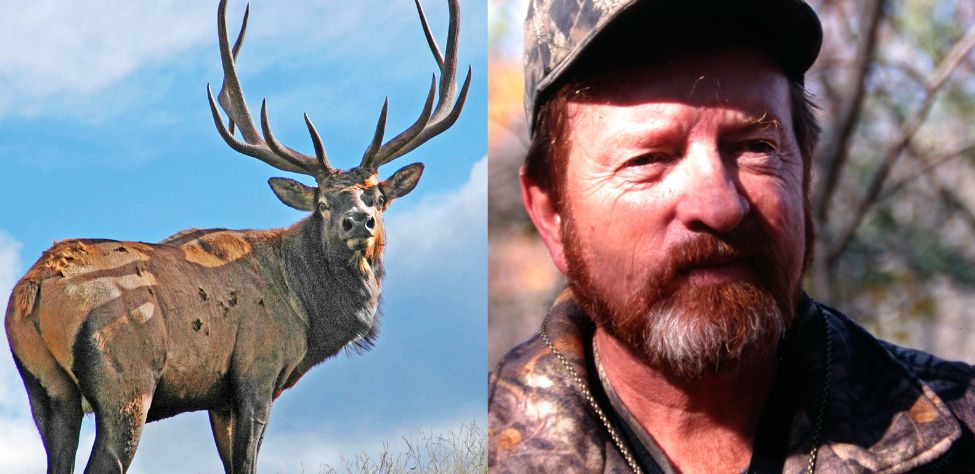
When asked why he started hunting elk, Hale answered, “Elk hunting is for me a non-working hunt. It’s the kind of hunt I can go and enjoy myself without worrying about cameramen needing a particular shot or calling an elk for anyone else. Elk hunting, for me, is a vacation hunt.
“I’ve learned right off that an elk is much bigger than a turkey – one of my favorite animals to hunt. But you can call him just like you can call a turkey. Since I was a turkey hunter, I found a sport I could participate in during the fall, mostly just for me.”
Hale has hunted six states for elk with a bow and killed a bull in each state, except he took two bulls in Arizona. He’s used muzzleloaders, guns, rifles, and bows to take those elk.
“I took my 25-year-old granddaughter elk hunting in New Mexico in 2023 and hunted on the Dawson Ranch right next to the Whittington Museum that the NRA built. On this hunt, I didn’t call; I just got my granddaughter in the right position, where I thought the bull would come out. The elk were in a thicket, came charging out of the thicket, and moved right to us. The guide had told us before the hunt, ‘You need to get to a bull that you can aim at and shoot off a tripod.’
“We found an elk that we could do that with, so when the first elk appeared, my granddaughter could get her gun out on the tripod and aim at the bull. Then, a second bull came out as we were getting ready to go to the truck. She took that bull. Although the bull’s rack was broken up from fighting, he would have been a 335—or 340-inch bull if he’d had all his antlers.
“A few years back, I got this terrible disease called Parkinson’s. A friend, Dr. Allen, from Kentucky, told me, ‘I think if you can ride on a four-wheeler, I can get you in position to take an elk. Then he asked, ‘David, can you walk about 100 yards?’ ‘I answered, ‘Yes.’ He told me I was good to go.
“While hunting with Dr. Allen, I bugled and followed it up with a cow call, and three different bulls answered. I called the first bull about 40 yards out with my Knight & Hale HyperVentilator call. But I couldn’t get on him with my riflescope, although my granddaughter got a picture of him with her cell- phone camera. He turned and went toward another bull that was chasing a cow and started glunking. So, my granddaughter got to hear an elk when he’s glunking. He walked across a pasture, stopped, and bugled, and I shot him at about 150 yards. That bull scored about 320 inches.”
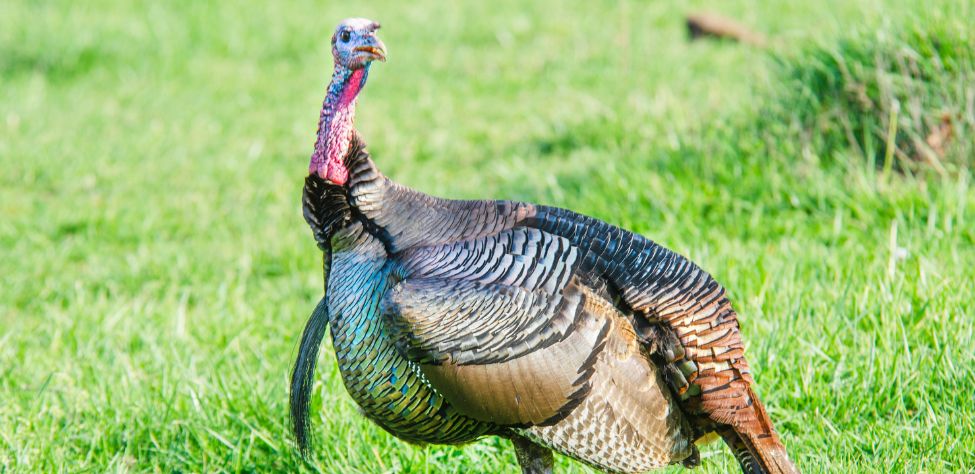
When we asked Hale what elk calls he used and how he used them, he answered, “A cow mew – an open-face reed call is a call I like because it makes a sound that no other elk call produces and sounds like a cow in heat. I’d bugle at him if a bull didn’t answer after I gave that call. Once I bugled, I followed that call with a HyperVentilator call, like a cutting sound on a turkey call. I could get my rifle scope on him and take him this time.
“At Knight & Hale, we made a bugle call that didn’t sound very good to me, but it seemed to impress the elk. I followed up with an open-faced reed call. Glunking is a sound that hunters can make with a bugle call by popping the end that you put in your mouth with your open hand. A bull elk uses that glunking sound when he’s hot after a cow. He comes up behind her and goes, ‘Glunk, glunk, glunk, glunk.’ That’s like when a turkey is drumming and focused on a hen. Then you just about can walk up and tap him with a stick, and that’s how a bull elk is when he starts using that glunking sound.”
When I asked David what he liked so much about elk hunting, he answered, “A good elk hunt is a hunt that not everyone can afford. Most hunts are limited draws. Elk make a sound in the fall, much like turkeys make in the spring. So, I look at an elk as an 800-pound turkey. When a turkey gobbles, the sound, and the effects are much like when an elk bugles; a turkey’s clucking is similar to a cow elk mewing; a turkey’s cutting is similar to an elk hyperventilating; and the sound of a shotgun going off to take a turkey is similar to a rifle going off when you’re shooting an elk.”
Knowing Hale has had Parkinson’s disease for some years, I asked, “How long do you think you can continue to elk hunt every year?” David Hale answered, “I’m planning on hunting these 800-pound turkeys every fall until the day I die.”
Looking for more content? Check out our YouTube channel and watch “Why More Women Are Hunting Now” by John E. Phillips.
Expert Guidebooks on Elk Hunting: Best Sellers

Secrets for Hunting Elk
The quickest, easiest (if there is an easy way), and safest way to find and take that bull elk of a lifetime will be to hunt with a guide.
Chad Schearer, a longtime Montana guide and TV personality, told me, “My hunter is my gun. If I get to the elk, and my hunter isn’t with me, then we don’t take the elk. My job is not only to find the elk but also to help the hunter get to the elk and make the experience as enjoyable as I can for him.” That’s the kind of fella with whom I want to go elk hunting.
An elk hunt can be tough, but it doesn’t have to be so tough that you don’t enjoy it. That’s why this elk hunting book starts with the confessions of an elk guide and with Chad Schearer’s philosophy of what the guide and the hunter’s relationship should be.
A good portion of your success will depend on your physical condition, and Matt Morrett of Harrisburg, Pennsylvania explains how an eastern hunter can get ready physically during June and July to hunt western elk, the animals he describes as, “Like deer or turkeys on steroids.”
Wayne Carlton, well-known elk hunter and TV and video personality from Montrose, Colorado, tells us what types of elk calls to use and what to say to the elk. Mike Miller of Colorado, another elk guide and Mossy Oak video personality, has tactics for the best equipment for bowhunting and gun hunting elk.
You’ll learn helpful strategies and hunting tips in this book, as well as some straightforward hunting methods that will help to make your elk hunt more successful.
“Thanks to the advice in your elk hunting books, I was able to call up a nice 6-point (6X6) bull elk! He was bugling like crazy. I called him in from about a ¼ mile away. Called him into bow range (about 40 yards away). It was a thrill!” ~Rob Brannon
VERSIONS: AUDIBLE & KINDLE

Elk: Keys to 25 Hunters’ Success
Often just one tip or tactic makes the difference in whether you take an elk home to dinner or have to hike back to the truck by yourself. In John E. Phillips’ latest elk book, Elk: Keys to 25 Hunters’ Success, you’ll learn from successful elk hunters the strategies they use to find and take elk.
Many know that the technique that seems to work most often is to hunt where other elk hunters don’t and understand where the elk are before you go on a hunt by studying data from each state, visiting HuntData (see chapter 1), examining maps, and reading postings on elk forums.
This book also tells you how to get ready physically for an elk hunt, including participating in Train to Hunt Competitions, what gear you need to take, how to enjoy a successful do-it-yourself elk hunt, or how to pick the best elk guide for you. You’ll also hear about the X System and the Broken Y System of hunting elk.
Although no one person has all the answers on how to help you find and take your elk, I’m convinced that this book’s outdoors men and women will teach you how to have satisfying elk hunts.
As my friend Karl Badger once told me, “Elk hunting doesn’t get any better than when I ride horses into the high backcountry, see two grizzly bears, hear a pack of wolves howl close to camp all night long, eat plenty of delicious food prepared on a fire and enjoy the company of good friends.”
VERSIONS: AUDIBLE, KINDLE & PRINT

How to Find Your Elk and Get Him in Close will teach you the tactics of 10 nationally known elk hunters, to help put that giant bull that’s been screaming at you from afar, in your lap. You’ll learn what some of the best guides, outfitters, and successful elk hunters do to find elk and get them in really close.
Also in this audiobook, you’ll notice that the majority of the experts call elk to within bow range. We selected numerous bowhunters and bowhunting guides, since the bowhunter has to get much closer to a bull than the gun hunter does – often less than 20 or 30 yards – practically in your lap.
On one elk hunt, I’d heard this bull bugle all morning. My guide had called him within 30 yards, and he was standing just inside black timber. I saw the smoke from his nose wafting out into the icy air less than 30-yards away. All the bull had to do was step out, and I could take the shot with my bow. But then, through no fault of my guide or me, the bull vanished.
The only conclusion I could come up with to understand why the bull I wanted to take with my bow hadn’t stepped out and given me a shot, was because he got raptured. He evidently had left the earth with no trace of himself.
This hunt was when I started wanting to learn more about hunting elk up close. In this book, I’ve tried to find some of the most knowledgeable, experienced, and practical elk hunters. I’ve always found that the best way to learn any outdoor skill, is to either hunt or fish with the best sportsmen in that field.
Often, in elk hunting, that means elk guides, who generally hunt every day of the season and receive a salary for every hunter they guide. So, I’ve put together a group of some of the best elk hunters I know to help us all learn how to find bull elk and get them in close.
VERSIONS: AUDIBLE, KINDLE & PRINT
Tomorrow: How to Take Big Bull Elk – 5 Ways


